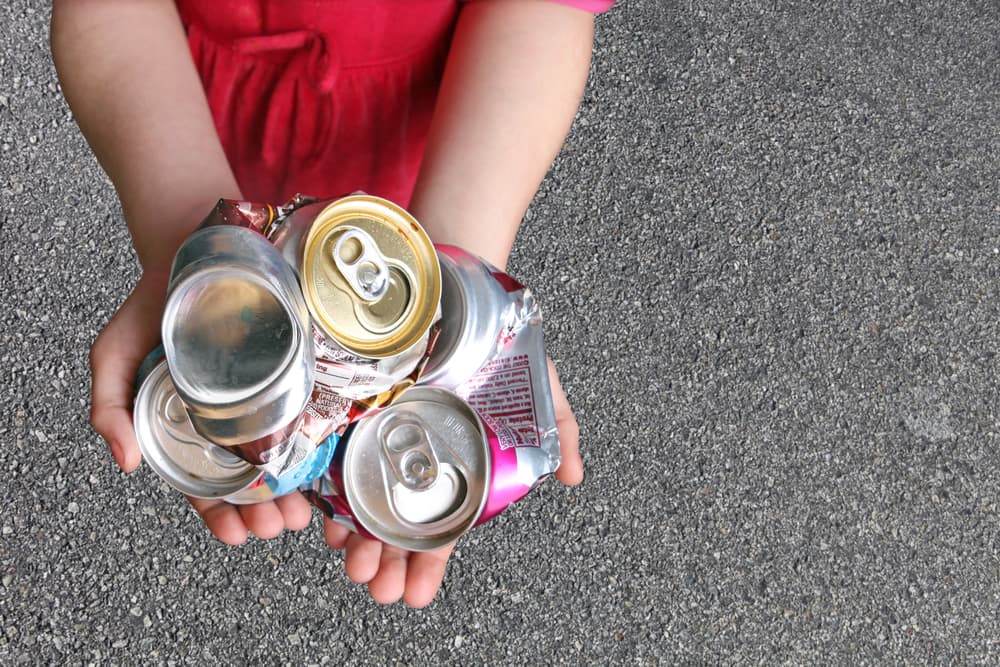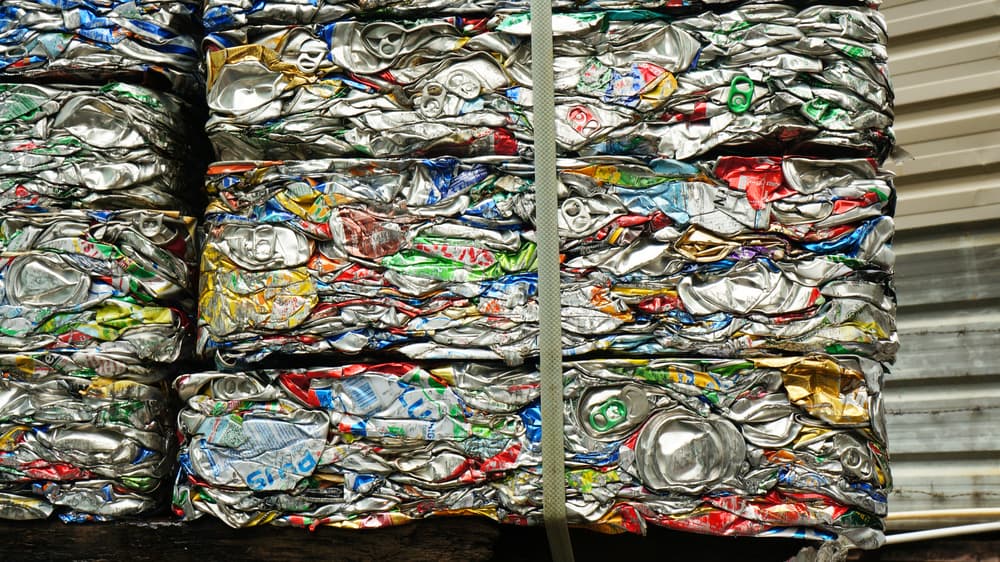Aluminum is all around us! Around your home, screen paneling, outdoor tables and chairs, lamps, and other decorative items are made from aluminum. In your kitchen, pots and frying pans are frequently made from aluminum. Of course, there are also aluminum cans in your fridge!
All of this aluminum will eventually end its useful life. That doesn’t make it trash. Aluminum recycling is beneficial to our Earth and is pretty easy to do. It’s fascinating to learn about, so let’s dig a bit deeper right now.
Table of Contents
- Aluminum Recycling
- Aluminum Recycling Process
- Irvine Home Recycling
Aluminum Recycling
By percentage, no other product material is more frequently returned to recycling plants than aluminum. This is great news! In fact, approximately 67% of all aluminum cans purchased by consumers are eventually turned in for aluminum recycling. It’s tremendously efficient. A staggering 75% of the new aluminum produced since the 1880s is still in use in one form or another. To put that number into perspective, only 9% of the world’s plastic water bottles are recycled.
One reason aluminum recycling is so popular is because of efforts to educate the public. Another is the fact that our modern process of aluminum recycling is so fast and efficient. Only 5% of the energy needed to create a fresh supply of aluminum is required to recycle the same amount. Aluminum is infinitely reusable, so there is no loss of quality after recycling.
Aluminum Recycling Process

Here is a brief explanation of how the aluminum recycling process works:
Step 1: Home Recycling. Aluminum is placed in recycling bins or in our clear plastic bags at a person’s home.
Step 2: Sorting. The aluminum is taken to a recycling facility for sorting. Often, magnets are used to separate metals. Magnets leave behind aluminum because it is non-magnetic.
Step 3: Shredding. The aluminum is next cut or shredded into small pieces to reduce its volume.
Step 4: Cleaning. The surfaces of the aluminum pieces are scrubbed clean. This is done to prepare them for the next step- melting.
Step 5: Melting. Next, it is loaded in bales into high-temperature, high-capacity furnaces. The aluminum is melted down at temperatures that reach or exceed over 1300 degrees Fahrenheit.
Step 6: Removal of Byproducts. Various waste products created in the melting process are then removed. This is done either mechanically or through the use of chlorine and nitrogen gas.
Step 7: Creation of Aluminum Alloy. Aluminum alloys are created by adding copper, zinc, magnesium, and/or silicon to the molten aluminum mixture.
Step 8: Compounding. Lastly, the molten metal is poured out and formed into ingots. These “new” ingots can be transported to aluminum processing or manufacturing plants to be made into new products!
Irvine Home Recycling

Aluminum is used extensively in the construction, manufacturing, and consumer products industries. It is one of the most versatile products and building materials on the planet. The same material that makes your soda can is also used in your screen door. Let’s recycle it and use it again and again! Those in Irvine can do so from home by having us pick it up for them.

